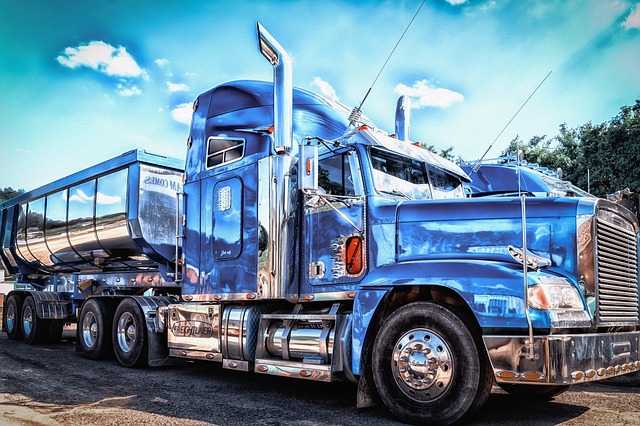Looking to register your car in California? This comprehensive guide breaks down the process step-by-step. From understanding key requirements like vehicle eligibility and needed documents, to visiting a DMV office and completing applications, we’ve got you covered. Learn how to obtain a Vehicle Identification Number (VIN) verifier for a smooth registration experience. Get ready to hit the road with confidence!
- Understand California Car Registration Requirements
- Gather Necessary Documents for Registration
- Visit a California Department of Motor Vehicles (DMV) Office
- Complete and Submit the Registration Application Form
- Pay the Required Registration Fees and Get Your Plate
Understand California Car Registration Requirements

Before diving into the registration process, it’s crucial to understand California’s car registration requirements. These regulations are in place to ensure vehicle safety and roadworthiness, as well as to maintain accurate records for taxation and insurance purposes. One key aspect is verifying the Vehicle Identification Number (VIN). In California, a valid VIN verifier must be used to confirm the authenticity of the VIN during registration. This can typically be done through a mobile vin inspection or mobile vin verification service, making it more convenient than ever before.
Additionally, vehicles must meet certain safety standards, including emissions requirements, as set by the California Air Resources Board (CARB). Owners are responsible for ensuring their cars are in good working condition and up to date with necessary inspections. Failure to comply with these standards can result in registration delays or denial, so it’s essential to be prepared with all required documents and ensure a mobile vin verification process is completed correctly.
Gather Necessary Documents for Registration

Before diving into the registration process, ensure you have all the required documents. One crucial element is the Vehicle Identification Number (VIN) verifier—a mobile VIN verifier app can be a handy tool during this preparation stage. This digital solution allows for quick and convenient verification of your vehicle’s history, ensuring all details are accurate and up-to-date.
Gathering these essential papers not only streamlines the registration process but also helps avoid potential delays or issues. Key documents include proof of ownership, vehicle registration (if applicable from another state), insurance paperwork, and a valid driver’s license. Additionally, some entities might require a title, purchase agreement, or other identification documents, so it’s beneficial to check with your local California Department of Motor Vehicles (DMV) office for their specific requirements.
Visit a California Department of Motor Vehicles (DMV) Office

To begin the process of registering your car in California, you’ll need to visit a local California Department of Motor Vehicles (DMV) office. This is where you’ll submit all the necessary paperwork and undergo crucial steps like vehicle inspection and identifying your vehicle through a Vehicle Identification Number (VIN) verifier. The VIN, a unique 17-character code, serves as a key identifier for your car’s make, model, year, and other details, which aids in accurate record-keeping at the DMV.
At the DMV, you’ll have the option to conduct a mobile VIN verification if needed. This service allows you to check your vehicle’s history remotely through an approved verifier. Alternatively, a traditional VIN inspection is also available where a specialist physically inspects your car for any discrepancies or potential issues. Once these steps are complete and all requirements met, you can proceed with the registration formalities.
Complete and Submit the Registration Application Form

To begin the registration process for your vehicle in California, you’ll need to complete and submit the Registration Application Form (Form DVF 140). This form is crucial for providing essential information about your car. Make sure to include details like the Vehicle Identification Number (VIN), which acts as a unique identifier for your vehicle. The VIN verifier tool provided by the California Department of Motor Vehicles (DMV) can help you ensure the accuracy of this number.
Once your application is complete, submit it along with required documents and fees to the DMV. If you’re considering a mobile vin inspection or want to use a mobile vin verifier, remember that these services can streamline the process by verifying your VIN on-site, ensuring convenience and accuracy during registration.
Pay the Required Registration Fees and Get Your Plate

After completing your vehicle’s registration application, the next step is to pay the required fees and obtain your license plate. California has specific fee structures depending on various factors like the type of vehicle and its age. You can either pay online or visit a DMV office to make this payment. Ensure you have all the necessary documentation, including proof of insurance, before proceeding.
Once your payment is processed, you’ll receive your registration documents and license plate. For added convenience, many services offer mobile vin verification or vin inspection, allowing you to complete these steps from the comfort of your home. Using a mobile vin verifier can streamline the process, especially if you’re short on time or have multiple vehicles to register.
Registering a car in California involves understanding specific requirements, gathering essential documents, visiting a DMV office, completing an application form, and paying fees. By following these steps, which include utilizing a reliable VIN verifier for accurate data, you can ensure your vehicle is legally registered and ready to hit the road. This process not only protects you from legal issues but also facilitates smooth ownership transitions and easy vehicle identification.
